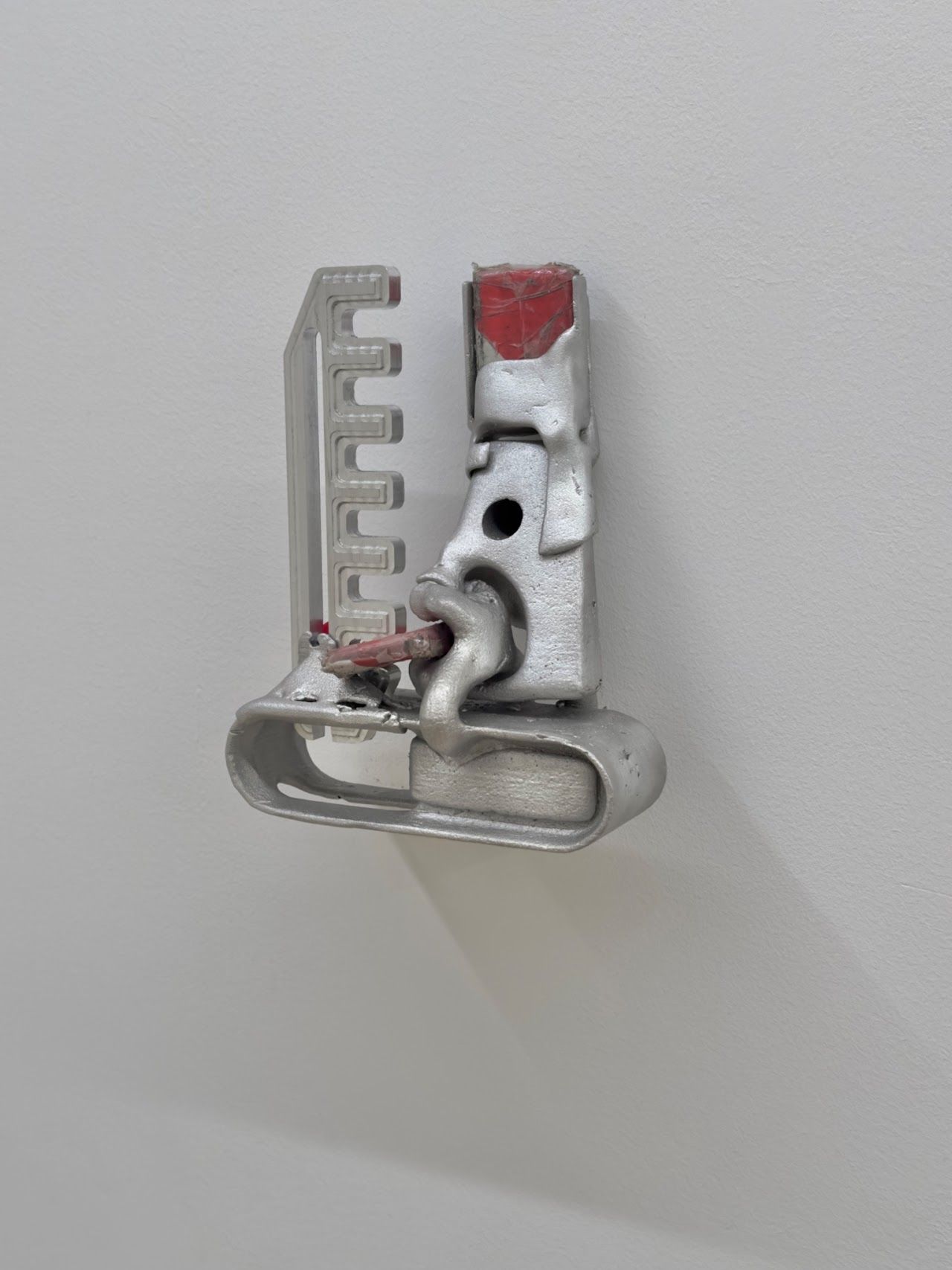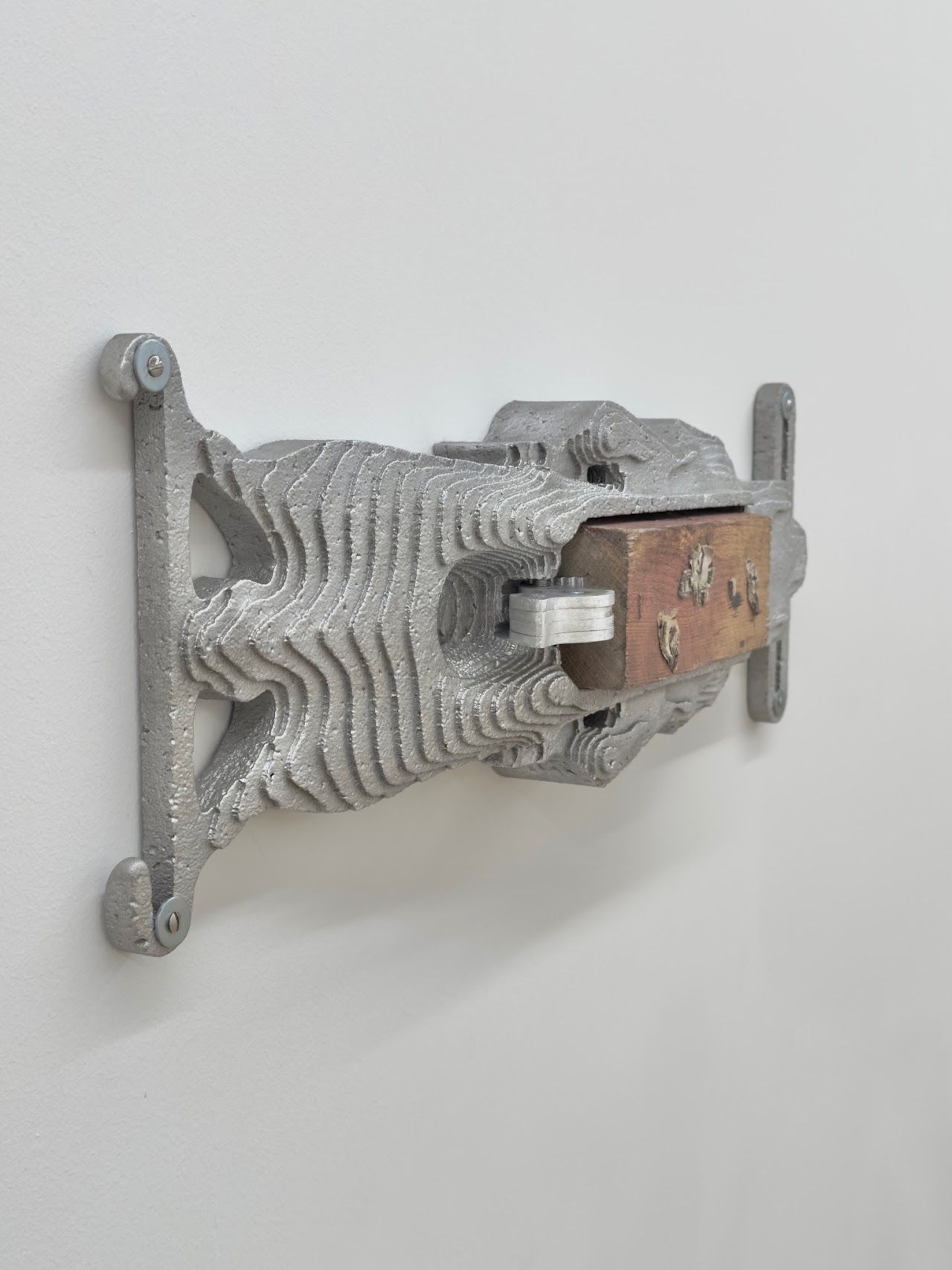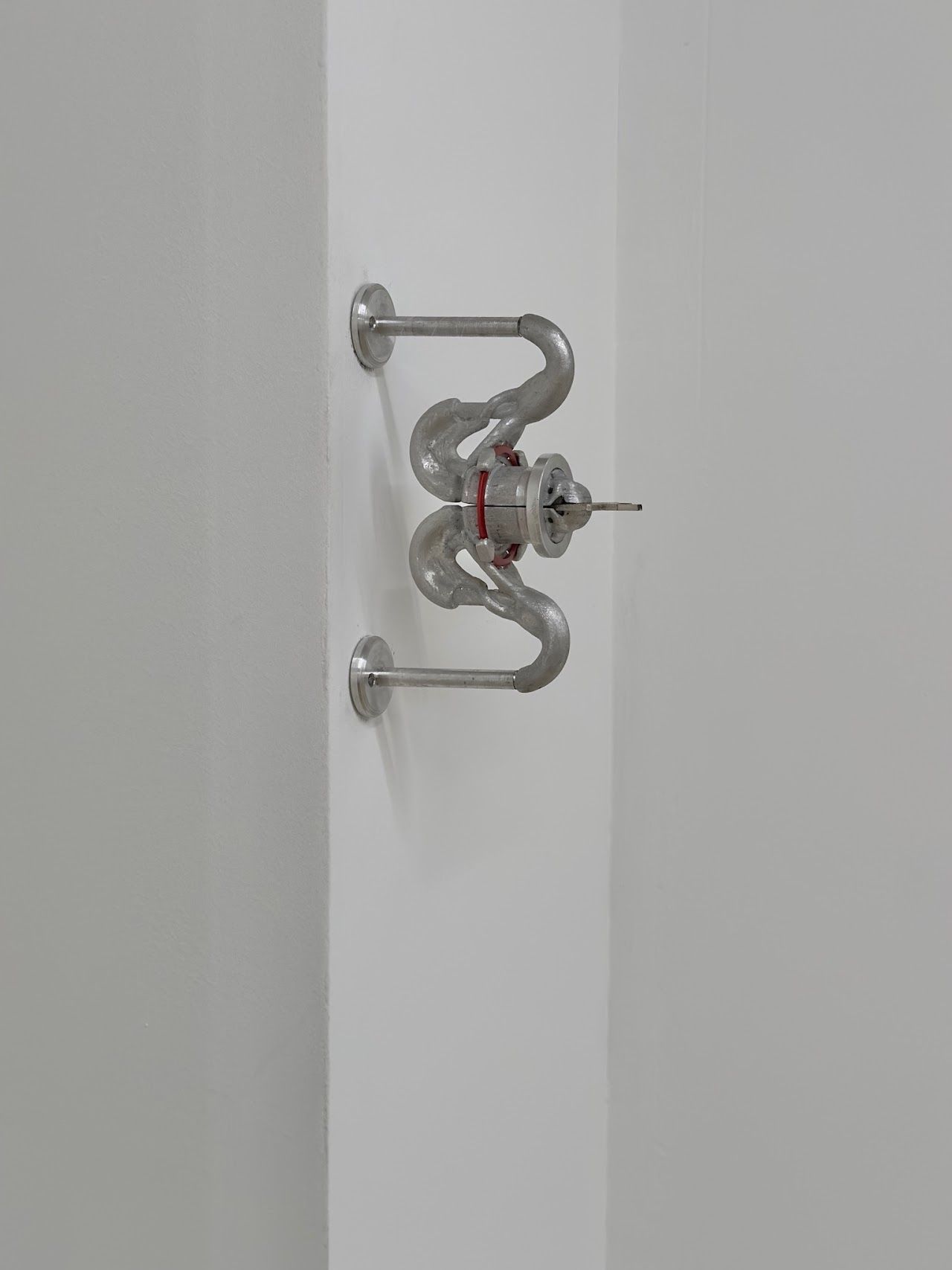Procure structures
Uģis Albiņš
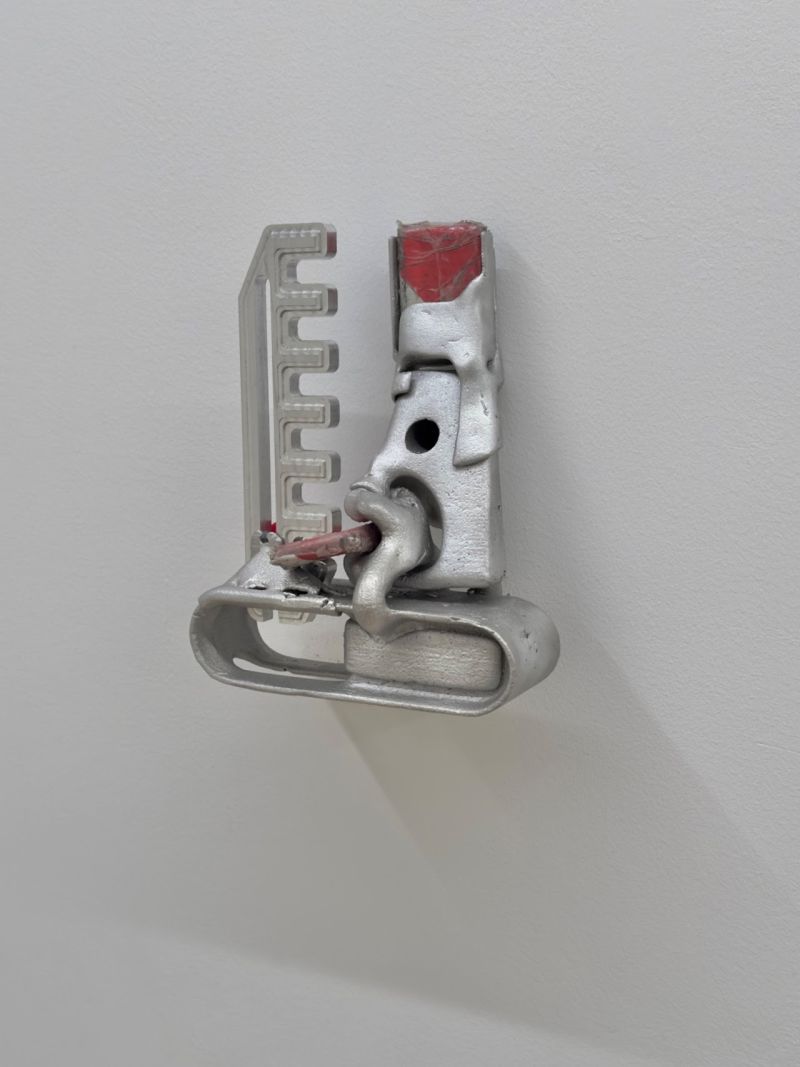
[1]
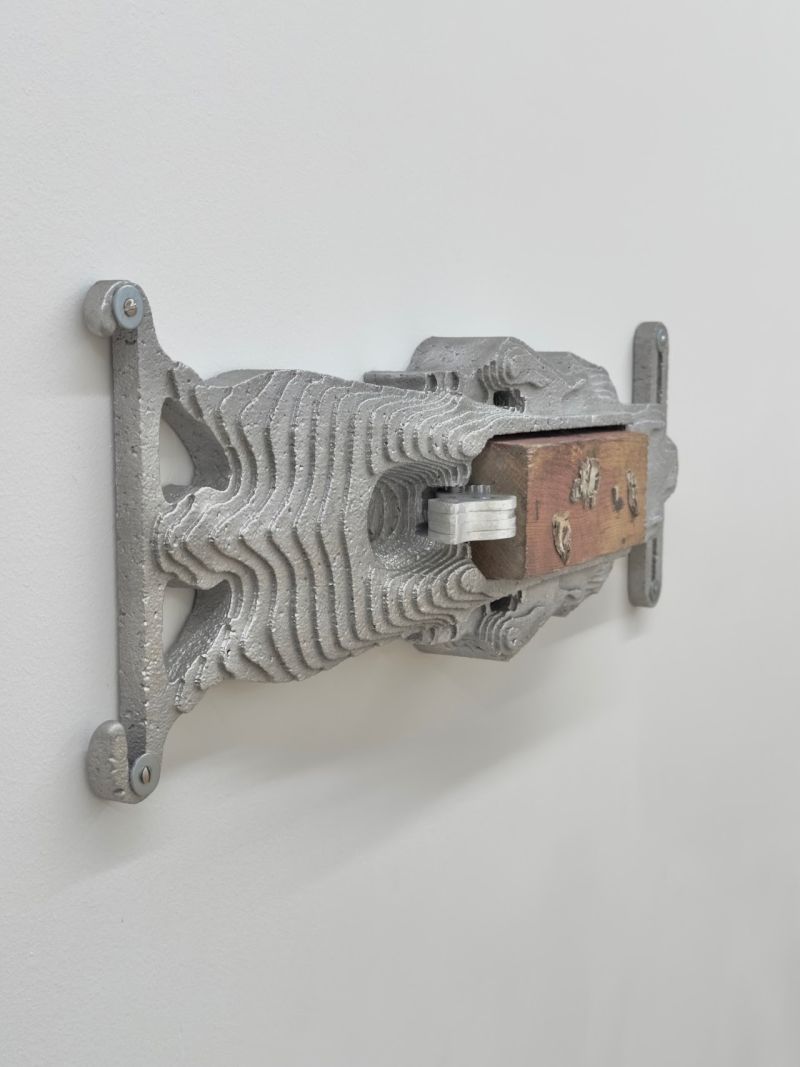
[2]
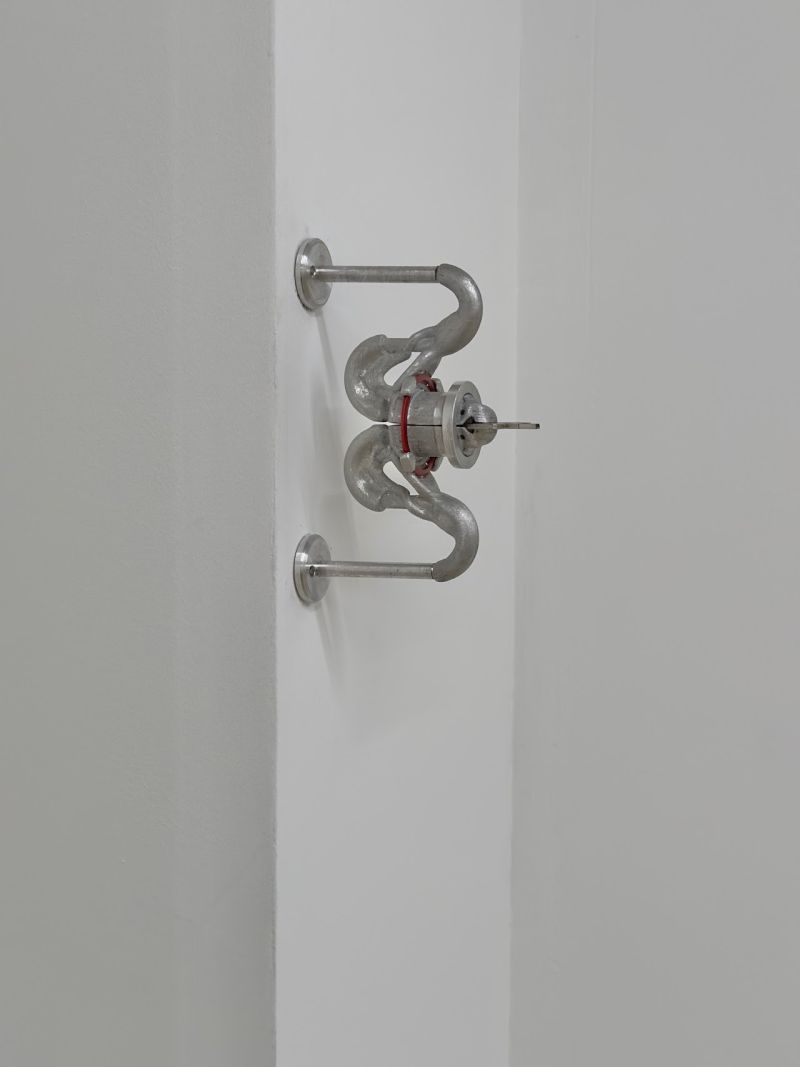
[3]
Text
Some structures that subordinate significant and not so significant actions in everyday life occasionally are in plain sight, although not visible as a physical form. Interestingly enough in modern engineering approaches there are methods for creating geometry that in some way resembles these invisible ways to create the most effective way to get the desired result.
While I went to buy some groceries in a shop, I noticed this handmade object that would stop the conveyor belt each time it was placed near its laser sensor. I thought about how this handmade object (a matchbox wrapped in tape) is in such stark contrast with its standardised, commercial environment.

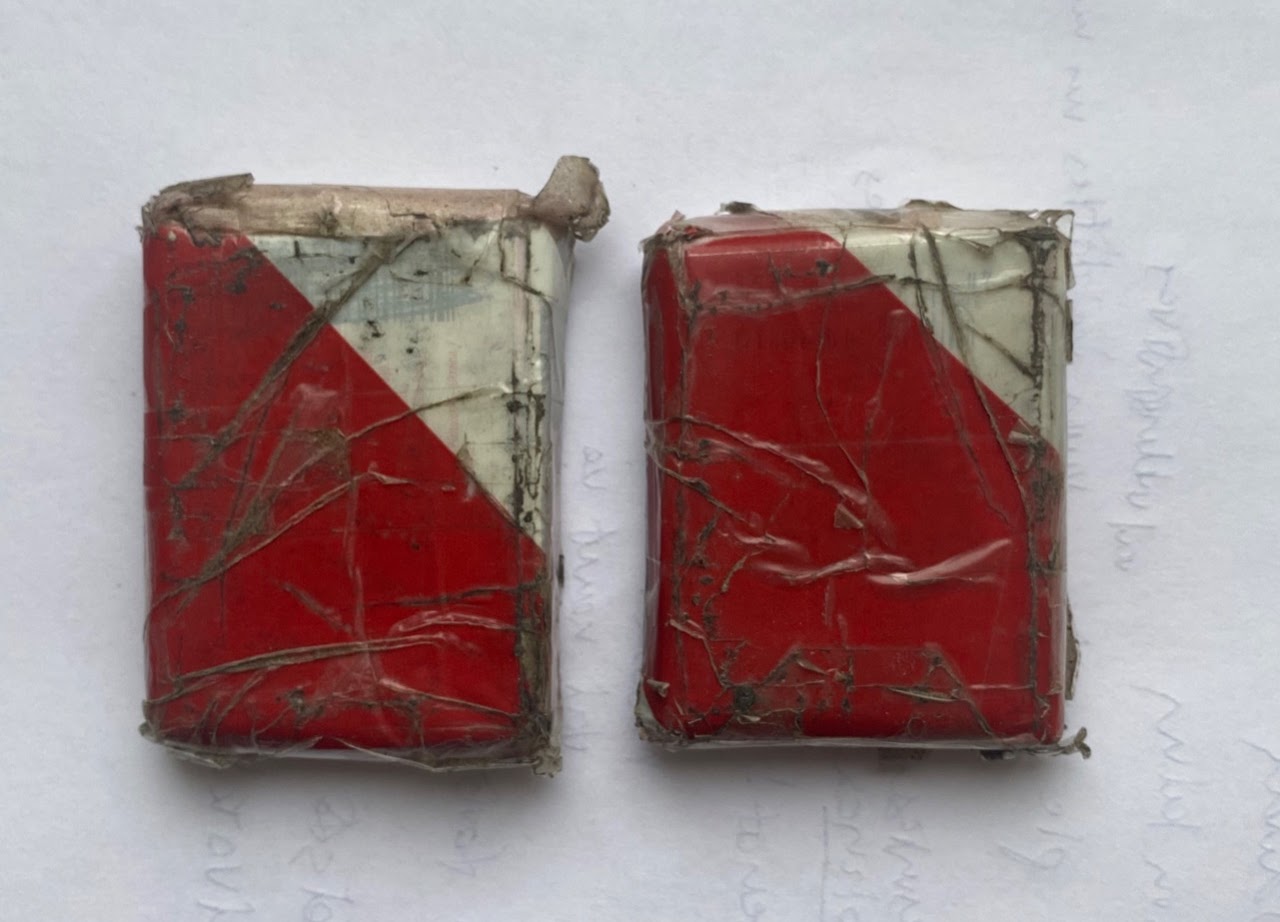
Since each store has a structure on how to organise each element – certain product order, certain time for discounts, instructions on how to operate a cash machine, ect. This artefact, object (a matchbox wrapped in tape) of a mellow creativity amid a highly regulated and complicated system of distribution and farm-to-market ecosystem(s), in this shape and material carried out the current time-space picture within Riga.
It is interesting to wonder why exactly a match box wrapped in a tape is a tool to execute this action. It is possible that in different countries, there wouldn't be such an artefact in the first place. This is linked also with the circumstances that surround this shop, there is a reason why there is a matchbox wrapped in a tape and not a rock wrapped in a plastic bag. It could also be due to the inheritance or as a reason to raise questions about why this artefact is a universal tool in any household in this geographical region.
In the Georgiy Daneliya's Sci-fi movie "Kin-dza-dza!" (1986) matchsticks are considered as a social status on the alien planet Pluk. Throughout the movie, the characters struggle to navigate the complex social structure of Pluk, and the symbolism of the matchsticks highlights the absurdity and randomness of the system.
Although the matchsticks in this shop have a different purpose it is quite random and also captures the momentum, similar to the landscape and architecture of Riga – between an advanced infrastructure and properties there are wild areas that are filled with some DIY structures where there is a different type of hierarchy.
Stores that have the exact same suppliers, same rules, same routine, same manufacturer for the one item that is being used by employers, after a few years, regarding the people who are working in that place, regarding their habits and the way how they work or act this item, it will look different. As an analogy the matchbox wrapped in a tape is a product of this small difference.
Observing the mentioned artefact and considering the reasons behind it, there are other elements in this sublime landscape – the advanced structure of complicated algorithms in marketing that are influencing the scenery and the environment. In engineering to create a path or geometry between one object to another, in the past, there have been numerous calculations and experiments to do it most effectively. Also there's been an insane amount of psychological experiments to create the most efficient strategy for the task in the marketing field. So one could say this “form” resembles common strategy as marketing tools and to make a guide for a certain action – between the path of least resistance to the local supermarket and generating a geometry.
In a plan of getting somewhere there is a necessity to form a route that is optimised regarding infrastructure, architecture and various circumstances, that each day are getting more advanced, engraving deeper paths, thus being shaped by the means of getting somewhere more efficiently. (The path of least resistance: Guy Debord's "Theory of the Dérive"). These circumstances affect the journey to form a structure. Biological organisms are obtaining a form also due to evolution of the most effective way to gain the goal, sometimes this form can become abstract but reasonable. 3D generative modelling is inspired from biology and anatomy. It has to calculate the most efficient geometry regarding strength, pressure and selected obstacles that are in the way from point A to point B, based on mathematical evolution and history. In this case it is creating the geometry from one match box (A) to the sliding part (B) and another match box (C), the result is generated automatically, regarding these circumstances.

(red the part that is assigned to be avoided, blue the part that is assigned to be joined)
For the other observations in a similar manner there were two more artworks created:
“Internetveikals”
(Aluminium, copper, found fragment of wood with hole in the middle together with staples and newspaper leftovers.) 60cm x 18cm x 7cm and
"Roundabout" (Aluminium, found broken key, found anodized aluminium ring.) 18cm x 8cm x 4cm
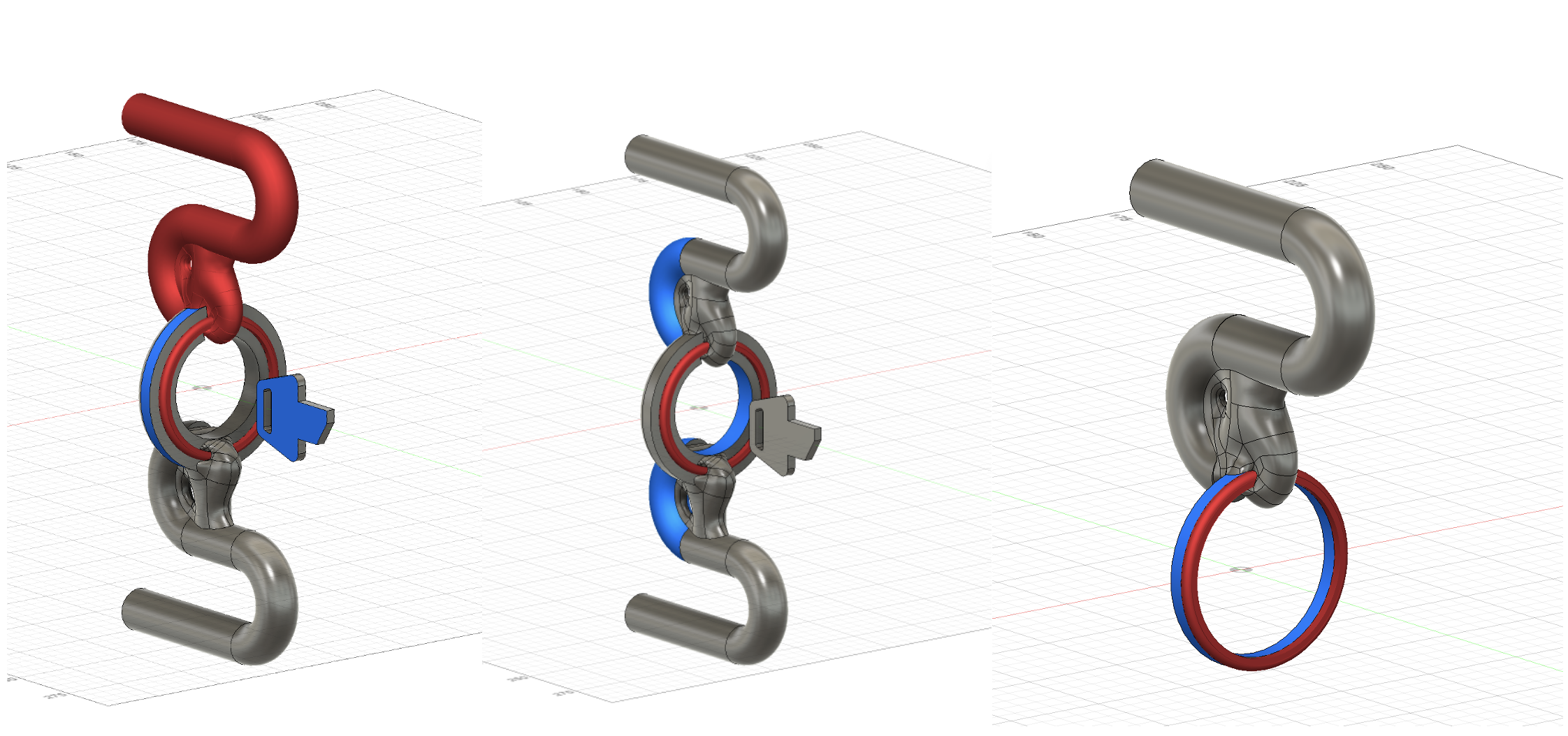
"Roundabout"
This structure of the form is also created with generative-automatic modelling, binding found wooden fragment with hole in the middle and an eccentric switch that is locking this wooden block in the aluminium frame which is optimised as the automation and production processes in our surroundings from which the aesthetic association is emerging.
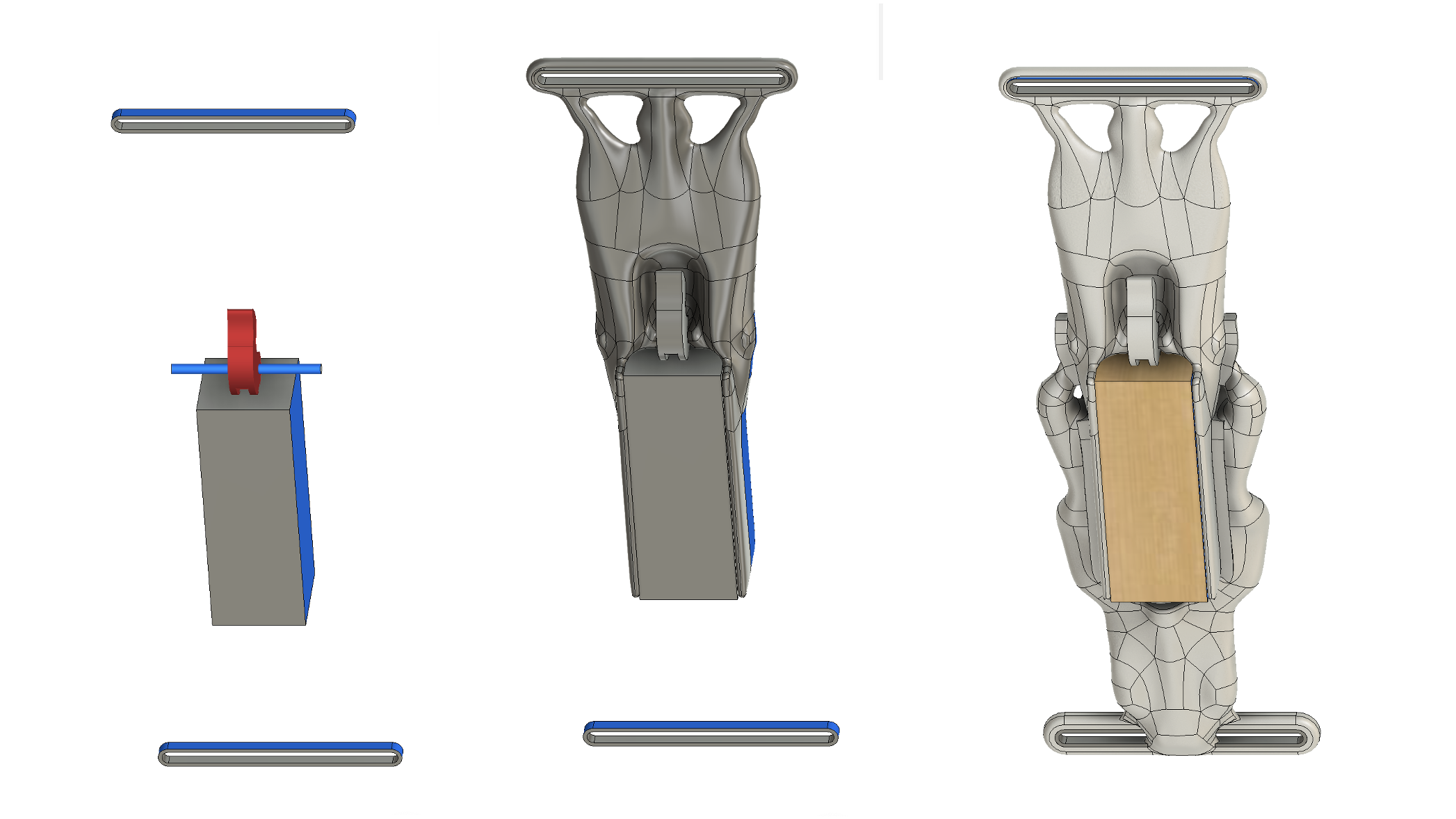
“Internetveikals”
The observations share the same similarities as the 3d objects, created using automated modelling, as natural formations, as structures of websites, platforms, as a walk in the path of least resistance.

[1]

[2]

[3]
